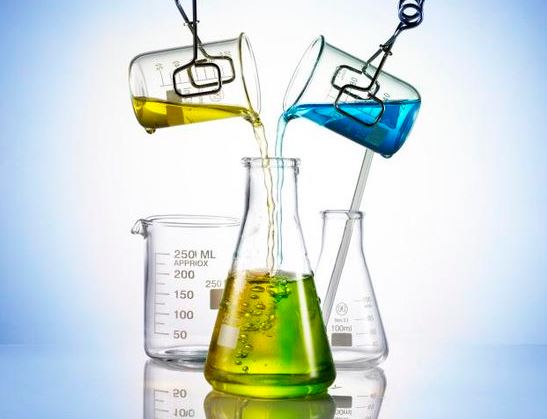Alkali Metals: An In-Depth Look at the Group 1 Elements
Alkali metals, known for their unique properties and wide range of applications, are a fascinating group of elements in the periodic table. This article provides a comprehensive yet accessible overview of alkali metals, covering their characteristics, uses, and significance in chemistry and daily life.
What Are Alkali Metals?
Alkali metals are a group of elements found in Group 1 of the periodic table. They include:
- Lithium (Li)
- Sodium (Na)
- Potassium (K)
- Rubidium (Rb)
- Cesium (Cs)
- Francium (Fr)
These metals are highly reactive and are known for their distinctive chemical and physical properties.
Key Properties of Alkali Metals
- High Reactivity: Alkali metals are highly reactive, especially with water. They react vigorously to form hydroxides and release hydrogen gas. For example, sodium reacts with water to produce sodium hydroxide and hydrogen gas.
- Softness: Most alkali metals are soft and can be cut easily with a knife. Lithium, sodium, and potassium are particularly soft.
- Low Density: Alkali metals have low densities compared to most other metals. For instance, lithium, sodium, and potassium are less dense than water and can float on it.
- Shiny Appearance: When freshly cut, alkali metals have a shiny, metallic luster. However, they tarnish quickly when exposed to air due to the formation of an oxide layer.
- Low Melting and Boiling Points: These metals have relatively low melting and boiling points compared to other metals. For example, potassium melts at about 63.5°C (146.3°F).
- Color in Flames: Alkali metals produce characteristic colors when burned. For instance, sodium yields a bright yellow flame, while potassium produces a lilac flame.

Chemical Reactions of Alkali Metals
- Reaction with Water: Alkali metals react with water to form alkaline hydroxides and hydrogen gas. The reactivity increases down the group, with francium being the most reactive, though it is rare and highly radioactive.
2Na + 2H_2O → 2NaOH + H_2 - Reaction with Oxygen: Alkali metals react with oxygen to form oxides, peroxides, or superoxides, depending on the metal. For instance, sodium reacts with oxygen to form sodium oxide, while potassium forms potassium superoxide.
4K + O_2 →2K_2O - Reaction with Halogens: Alkali metals react with halogens to form ionic salts. For example, sodium reacts with chlorine to produce sodium chloride (table salt).
2Na + Cl_2 →2NaCl
Applications of Alkali Metals
- Lithium:
- Batteries: Lithium is widely used in rechargeable batteries for electronics and electric vehicles due to its high energy density and light weight.
- Medicine: Lithium compounds are used in the treatment of bipolar disorder to stabilize mood swings.
- Sodium:
- Street Lighting: Sodium vapor lamps are used for street lighting and are known for their characteristic yellow light.
- Chemical Industry: Sodium is used in the production of chemicals like sodium hydroxide and sodium carbonate.
- Potassium:
- Fertilizers: Potassium compounds, such as potassium chloride, are used in fertilizers to promote plant growth.
- Industrial Processes: Potassium is used in various industrial processes, including the manufacture of glass and soaps.
- Rubidium and Cesium:
- Atomic Clocks: Rubidium and cesium are used in atomic clocks to measure time with high precision.
- Research: These elements are used in scientific research, including studies of atomic and molecular properties.
Safety and Handling of Alkali Metals
Due to their high reactivity, alkali metals must be handled with care:
- Storage: They are typically stored under oil to prevent reactions with moisture and air. For example, sodium and potassium are kept submerged in kerosene or mineral oil.
- Handling: When handling alkali metals, use proper safety equipment such as gloves and safety glasses. Always work in a well-ventilated area to avoid exposure to hazardous gases produced during reactions.
- Disposal: Dispose of alkali metals and their compounds according to safety regulations. They should not be disposed of in regular waste as they can react violently with water and other substances.
The Role of Alkali Metals in the Periodic Table
Alkali metals play a crucial role in the periodic table due to their distinctive properties and reactivity. They are essential for understanding chemical bonding, reactions, and the behavior of metals.
- Periodic Trends: The alkali metals show clear periodic trends, including increasing reactivity, decreasing ionization energy, and increasing atomic and ionic sizes as you move down the group.
- Chemical Bonding: Alkali metals form ionic bonds with nonmetals, creating stable compounds that are important in various applications and industrial processes.
Alkali metals are a fascinating group of elements with unique properties and a wide range of applications. Their high reactivity, soft texture, and low density make them stand out among other elements. Understanding their behavior, uses, and safety considerations provides valuable insights into chemistry and helps appreciate their importance in technology and industry.
This article provides a comprehensive yet easily understandable overview of alkali metals, aiming to fulfill the search intent of readers interested in learning about these essential elements. Whether you’re a student, educator, or simply curious, this information offers a clear and informative look at the role of alkali metals in science and everyday life.




